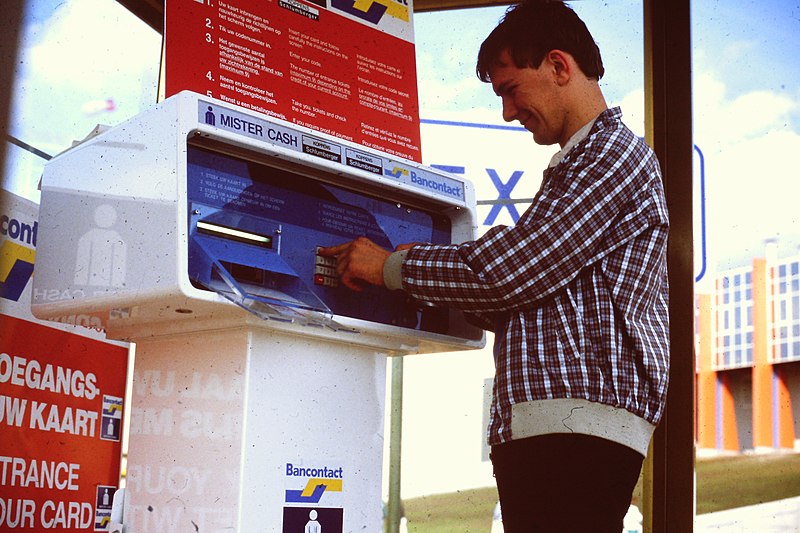Two technical inventions stand out in this development:
- In 1968, a patent was applied for a card with a chip. A few years later, it was put on a more practical carrier medium: plastic cards in the credit card format, already common at the time.
- In 1989, the internet was launched, which, by the second half of the 1990s at the latest, made it possible to carry out banking transactions online (also in conjunction with chip cards), opening up completely new possibilities.
In terms of economic policy, 1968 was also highly significant: banks from seven European countries agreed to introduce the so-called Eurocheques, cross-border guaranteed cheques of European credit institutions (1). Many other countries joined in.
All this changed purchasing behaviour throughout Europe. But which stages were noticeable and visible in East Belgium?
- The chip card was first used en masse for the first ATMs, from which money could initially be withdrawn in the country of origin alone. They were set up in Belgium (as in most other European countries) in 1979: on the one hand Bancontact (for the banks ASRK, BBL, Kredietbank), on the other hand Mistercash (Generale Bank, Gemeindekredit).
- The Grenz-Echo reported on a big PR action when the first Mistercash ATM was put into operation in Eupen on 11 November 1980 (2).
- There is no evidence in the daily press of when the first ATM went into operation in the Belgian Eifel. The first Postomat went into operation in Sankt Vith in 1986. CERA introduced its ATMs in East Belgium in 1992.
- Telephone banking was possible from the 1980s onwards, but was still hardly used in East Belgium. It differed from internet banking. It started in the second half of the 1990s. Between 1998 and 2018, the number of internet banking users in Germany increased from 8 to over 50 percent. In 2018, 5.9 million Belgians used virtual banking facilities. Figures for East Belgium are not available.
- In 2018, each Belgian spent an average of 1,273 euros shopping online (3).
- Not just the flow of money, but also the flow of goods now runs via the virtual network.
This development is visible, among other things, in the bank branches in East Belgium: many a branch has closed; a lot of staff has been cut; customers have been pushed towards virtual money transactions and the technical possibilities of virtual payment have been pushed further and further. Cash registers now only exist in large branches. Face-to-face customer consulting for investment and loans have moved in the foreground.
Yer, many customers are also increasingly pulling out their ‘Maestro’ cards in everyday life to pay online in shops as well. In East Belgium, too, there is a card reader in almost every retail shop. Hence, in 2017, 64 percent of Belgians said that this was their most popular form of payment. Since 2022, shops in Wallonia, and therefore in East Belgium, too, are legally required to offer electronic payment.
There is really only one question left: when will cashless payment also become the norm in East Belgium?
Carlo Lejeune
From ZVS, 2021
(1) This form of cashless payment expired on 1 January 2002.
(2) Grenz-Echo, 13/11/1980.
(3) Grenz-Echo, 14/03/2019, p. 3.

